Botanists Over Bulldozers: Reaching New Heights at the American Public Garden Association 2025 Conference


One of the most valuable aspects of attending the American Public Gardens Association Annual Conference each year is the opportunity to connect directly with the community we serve, not just to see what's blooming, but to hear what's top of mind, understand the challenges you're grappling with, and celebrate your successes.
Exploring the Region
This year in Denver, Colorado, Jamie and I each joined separate pre-conference tours, seizing the opportunity to explore the region's public gardens while learning about the unique stories and dedicated people caring for these wonderful spaces. For me, living in the Netherlands, but with genetic roots in Norway, the lure of the Rocky Mountains was irresistible, a perfect chance to cure my altitude deficiency. A visit to the world's highest botanical garden was simply unmissable.
Betty Ford Alpine Botanical Garden
Driving through Loveland Pass at nearly 12,000 feet (3,660m), the air grows thin and the scenery transforms dramatically. Some of us had optimistically worn shorts and sandals, leading to a rather brisk experience walking through the snow. However, the breathtaking views provided ample distraction from any discomfort. Between the snow patches, we discovered wonderful, tenacious plants thriving in their natural habitat, including Eritrichium nanum (Alpine Forget-Me-Not), showcasing its vibrant blue blooms.
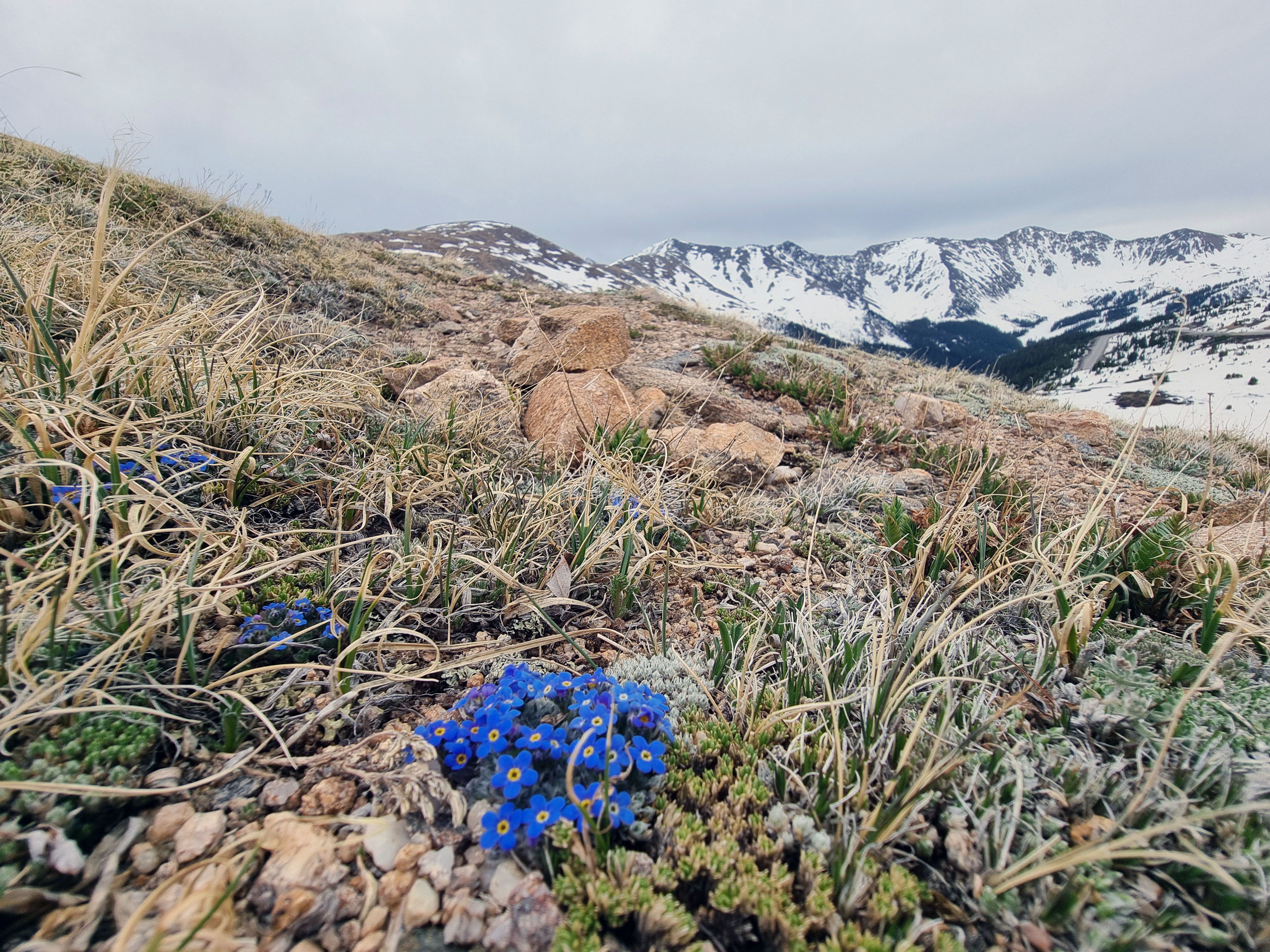
At Betty Ford Alpine Gardens in Vail, situated at 8,200 feet (2,500m), we were greeted by stunning displays of high-altitude flora, thoughtfully curated to both educate and inspire. I had the pleasure of attending sessions presented by Colin Lee, curator of plant collections, and Emily Griffoul, conservation scientist at the garden. The vital work of conserving alpine species, many of which are threatened by climate change, delivered a powerful message about the fragility of these ecosystems and our shared responsibility to protect them.

The garden remains under snow until May, so it was remarkable to witness what the team had accomplished in such a short growing season. What must have been a snow-covered landscape just weeks earlier had transformed into a green oasis, truly impressive work.🥳
Growing on the Front Range: Fort Collins & Cheyenne
Jamie visited four very different gardens on the Monday tours, each offering something unique, whether it was their focus on conservation, research, or public engagement.
Northern Water Conservation Gardens (Berthoud)
These gardens are part of a demonstration site used to promote water-wise landscaping for Colorado’s dry climate. The space includes over 700 species of plants, including native and alternative turf grasses, along with displays focused on efficient irrigation systems and soil preparation. What stood out most for Jamie was the water garden, which looked incredible, framed by silver birch trees, keeping the area cooler. [learn more]

Cheyenne Botanic Gardens (Wyoming)
Located just over the border in Cheyenne, this nine-acre site includes perennial borders, vegetable plots, a rose garden, and the impressive Shane Smith Grand Conservatory. Inside the conservatory, we found a mix of tropical and subtropical plants – including fruit trees, a bonsai collection, and a tortoise relaxing near the water features. It’s quite a diverse setup and shows how much can be packed into a relatively compact space. [learn more]
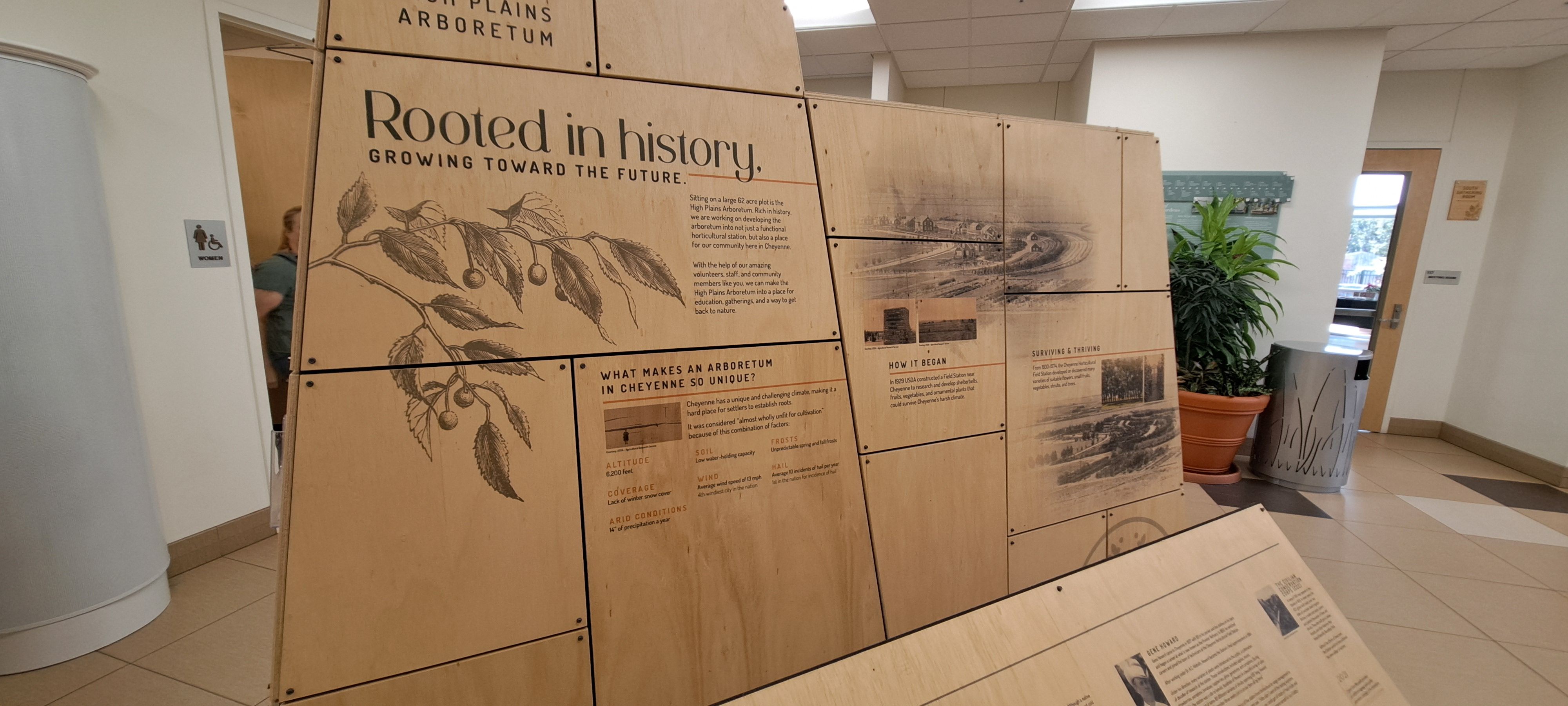
Colorado State University Annual Flower Trial Gardens (Fort Collins)
This was a particularly interesting stop and not what Jamie had expected. The trial gardens are right in the middle of the CSU campus, surrounded by student life, yet extremely well-maintained. Over 1,000 annuals and perennials are evaluated each year across nearly three acres. The quality of the plant care was impressive, and the perennial demonstration areas – complete with some strikingly large hostas – really showed off what’s possible when plants are grown under careful observation. Trial gardens aren’t something often seen in the UK, so it was refreshing to experience one in person. [learn more]
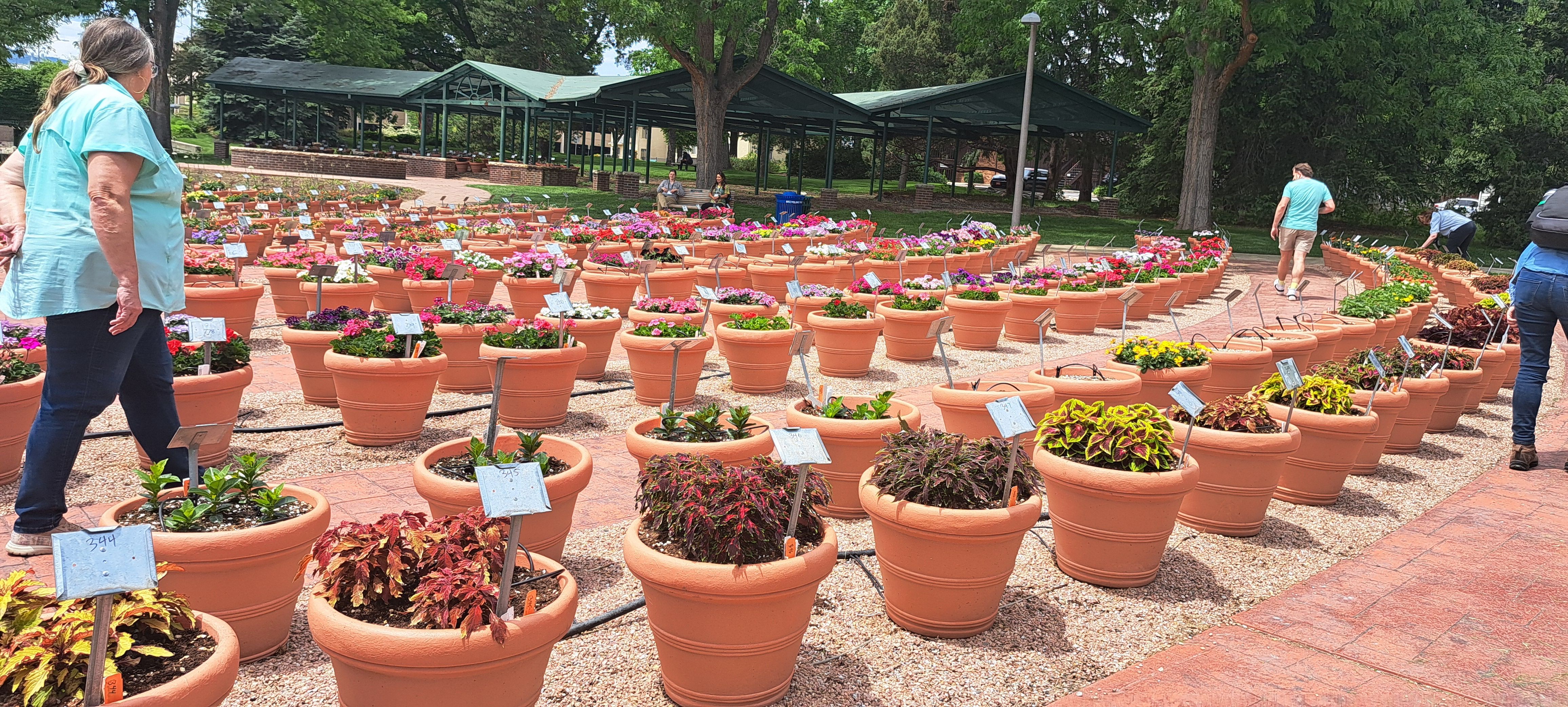
Gardens on Spring Creek (Fort Collins)
This city-run garden blends designed spaces with ecological themes. It includes several areas such as a native plant garden, a children’s garden, and a butterfly house that partners with the Butterfly Pavilion. The whole site has a relaxed, natural feel to it. While walking through, Jamie even spotted a couple of small snakes darting off into the stone walls, a great reminder that the gardens support local wildlife as much as they do plants. [learn more]

Key Takeaways from the Sessions
Collaborate to Win
Attending the conference means making difficult decisions about which sessions to prioritize. I was able to join several impactful discussions, including the “Metacollection Think Tank”, the APGA Plant Collection Network forum, and "Emerging Tools for Building Climate Resilience in Public Gardens."
The underlying message from many sessions aligned with a growing consensus in our community: individual plant collections have limited capacity to prevent species extinction on their own. We must rethink how we collaborate to safeguard diversity in our collections. This push for enhanced collaboration and coordination requires reliable data, but it also creates opportunities for smaller institutions to play more impactful roles. Organizations such as APGA, Botanic Gardens Conservation International, the Botanic Gardens of Australia and New Zealand, and other regional networks are playing an increasingly critical role in facilitating this collaboration.

Unique but small collections can be vital to our collective future, and we're already seeing signs of this trend among many gardens we work with. The key to success lies in unlocking each collection's potential through reliable collection data. Here's an inspiring story from Australia that exemplifies this trend.
Botanists Over Bulldozers: The Financial Case for Plant Conservation
During a bus trip conversation with Chad Washburn, Vice President of Conservation at Naples Botanical Garden, I learned about their Beach Dune Restoration project. Though I missed the formal session, I want to share this compelling story because it demonstrates how plant and habitat conservation can speak directly to politicians and philanthropists.
As nonprofits, we can sometimes become absorbed in our own world of plant conservation, assuming it's evident that biodiversity loss poses an existential risk to humanity. However, our current climate of short-term thinking demands clearer messaging, and Naples' project provides a perfect example of conservation work with enormous financial benefits.
Hurricanes regularly devastate Florida's shorelines, and beach nourishment comes at an enormous cost. Over the past 87 years, Florida has spent at least $1.9 billion on replenishing the sand on its beaches, according to the National Beach Nourishment Database.

Enter the Beach Dune Restoration project. Beach dunes serve as natural barriers protecting coastal communities from nature's forces. Composed of sand and plants, dunes help dissipate wind and wave energy, thereby reducing the impact of storms on built environments. This initiative ensures beaches are populated with diverse plant communities derived from locally adapted genetics, attributes that create truly resilient shorelines.
When choosing between a bulldozer and a botanist, I'd pick the botanist every time.
Learn more about this remarkable project.
Catching up and making new friends
Thank you to everyone who took the time to visit our exhibit. Angela, Jamie, and I had a wonderfully busy time connecting with you all and apologize if we weren't able to give everyone our full attention during the busiest periods.
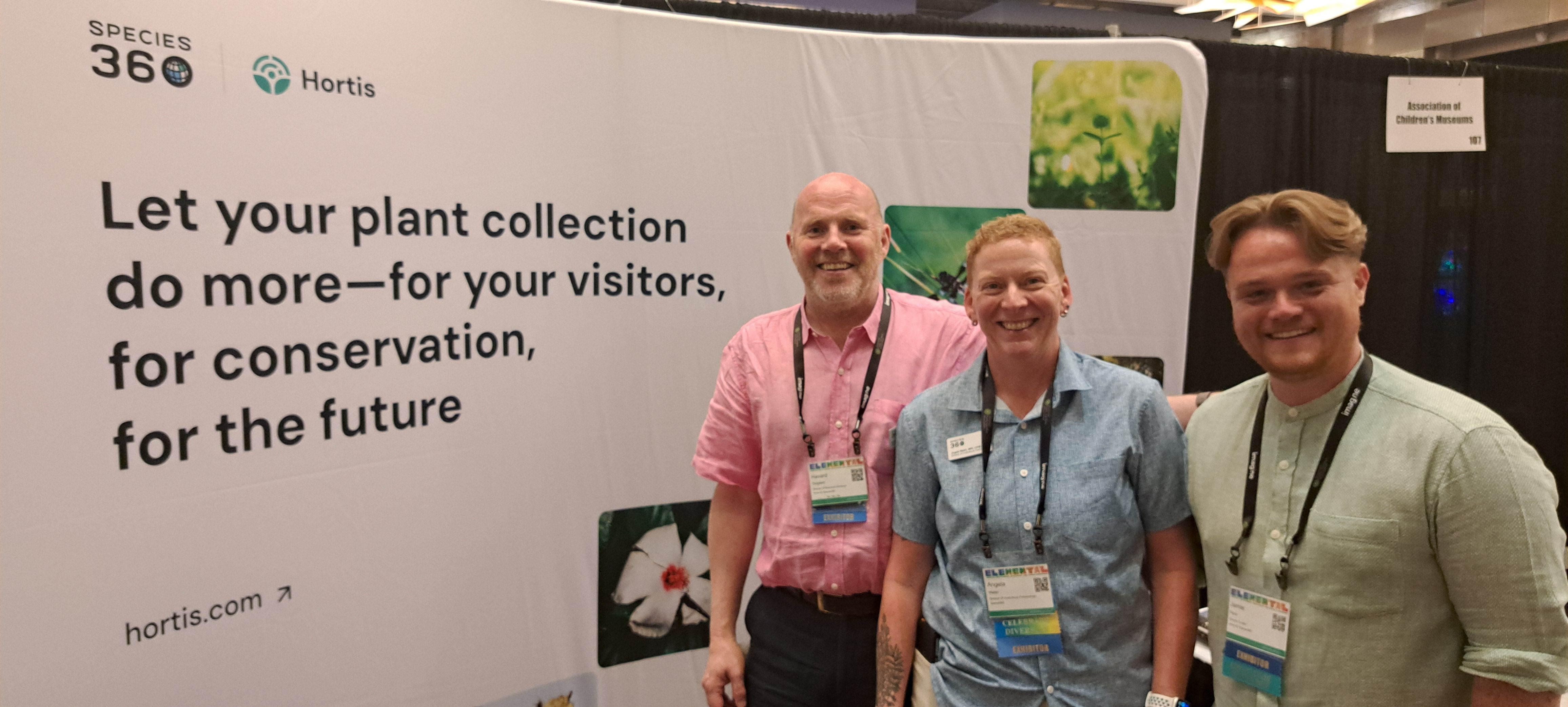
Special thanks to those who participated in our hands-on competition. It was an excellent opportunity to showcase Hortis's new inventory workflow in action. Many delegates threw themselves into the challenge with enthusiasm. Using our micro garden setup, they aimed to record three plant observations: condition assessment, comments, and photographs. Impressively, many completed the task in under two minutes, with Adam Flint from Ganna Walska Lotusland taking the top spot. Congratulations!
Most importantly, we deeply appreciated the chance to finally meet so many of our community members face-to-face. There's nothing quite like connecting in person after years of digital collaboration. Thanks for stopping by and sharing your stories with us.
A Heartfelt Thanks to Our Hosts and APGA
It was a great pleasure to visit Denver for the second time, following my first visit in 2014. I would like to begin by thanking the organizers for taking the time to honor the late CEO of the Denver Botanic Gardens, Brian Vogt, who sadly passed away earlier this year, far too soon. Like many other APGA family members, I had the pleasure of brief conversations with Brian over the years, and it's clear that his legacy is deeply embedded in the garden and among the wonderful people who work there.
The tours to Chatfield Farms and the main botanical gardens were exceptional, and it was impressive to witness how quickly the teams adapted to Mother Nature's challenges to ensure we were all well cared for. Thank you so much for your dedication and flexibility.
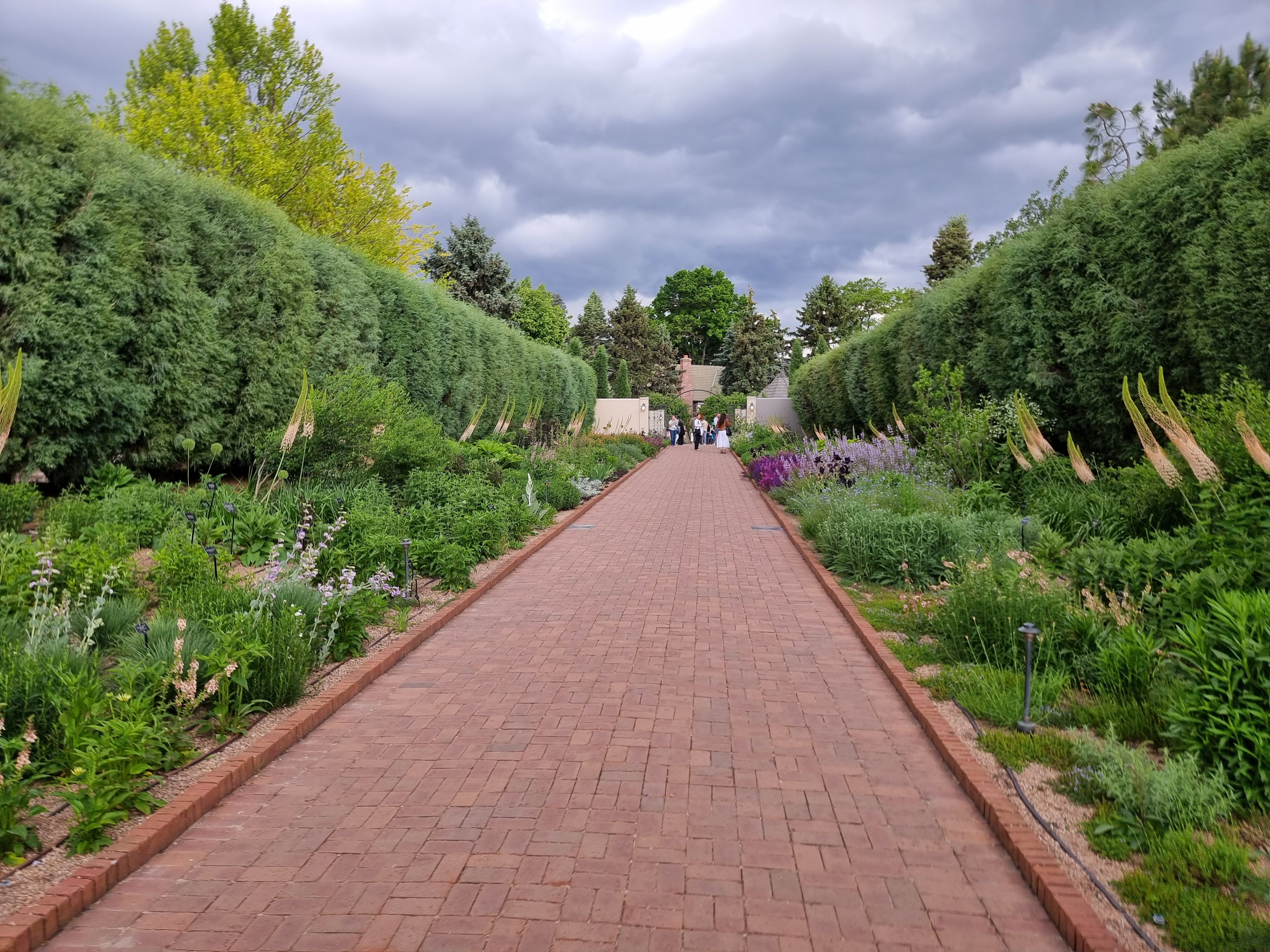
Special thanks also go to Michelle Provaznik, Pam Allenstein, and the entire team at the American Public Gardens Association for once again organizing such a wonderful and memorable experience. Your efforts are truly appreciated, and I make it a point each year to encourage colleagues from other countries to join and experience what has been an annual highlight for me over these past 13 years.
Looking forward to seeing everyone again in San Francisco in 2026!